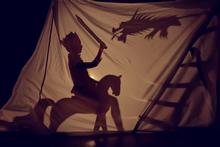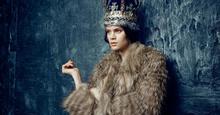Transform Your Stories; Transform Your Life
A long, long time ago, in a land far, far away, we began to weave together stories inherited from our family, ancestors, and environment. Stories of how the world works, who we are, where we come from, and where we are going. Finding Your Story: Using Archetypes to Guide Your Personal Journey, by Hugh K. Marr, Ph.D., contains a series of exercises that go progressively deeper to excavate these hidden and unconscious stories. A master storyteller himself, Marr eventually brings you to the foundational story of your life (so far), which is not only a weaving together of the many facets of your life but also a distillation of these many stories down to their archetypal essence. In the introduction to Finding Your Story, Marr tells you that this guidebook is designed to transform your life story into an archetypal story. Or, put another way, this book will guide you to discover the mythic realm of your life story and re-enchant your world.
Do not think that a "re-enchantment" of your life story is flimsy work; it is the real deal of transformation. To retell and reimagine our stories about why we are who we are and how we ended up in the life we have is to elevate them to a universal, even eternal, level. This transformation from the mundane to the universal is what working with archetypes and your archetypal stories can do for you. Archetypes beckon and call from the land of enchantment, but this does not mean they are imaginary. On the contrary, archetypes are rooted in what is most essential and important about human beings and the lives we live—in the life you live.
In the work of C. G. Jung, the mythic, enchanted realms of the psyche (which he called the collective unconscious) were embodied in the everyday relationships, problems, challenges, and dreams of regular people like you and me. Jung realized that we are living, in an embodied and real way, every day, ancient myths that express archetypal human dramas. In this way, our life experiences and stories are the real-world struggles of mythic dramas. Or, as Joseph Campbell put it, "the latest incarnation of" the heroes, kings, and queens of myth "are standing on the corner of 42nd Street . . . waiting for the light to change."1
The gift of Marr's work is how he roots this enchanted, symbolic understanding of life stories into our stories of everyday experiences. He patiently walks us through the layers of experience, memories, and dreams of our childhoods—the important stages of our lives—guiding us to extract their meaning. For example, an early exercise in the guidebook is about what is in a name—that is, the actual and symbolic, intuitive, and implicit meaning of your name. Were you named after a relative or ancestor? What is their story? Is your name attached to an ancestral land or culture? Or is it one that a parent especially cherished because it was the name of a dear friend? In another set of exercises, Marr guides you in assigning archetypal characters to core family members from your PMAI® Archetype Profile, asking you to consider what they meant to you then and now. In the last chapter, one of the final exercises brings you the creation of new stories, both in your past and in your future.
These exercises are the work of re-enchanting your life through not only understanding but emotionally embodying the symbolic level of your life story. In everyday life, we often think of our life experiences and stories as rooted in pragmatic reality, which they are, in part, but a great deal of our stories are interpretations with a good dose of imagination. This is an exciting journey of self-discovery where it is beneficial to have a broad-minded and warm-hearted guide—there is no better one than Hugh Marr.
Finding Your Story: Using Archetypes to Guide Your Personal Journey will be available for purchase in October! Sign up to receive emails from Storywell to be notified.
1. Campbell. (1968). The Hero with a Thousand Faces. Pantheon Books.




.png)
















_thumb.png)
_thumb.png)
